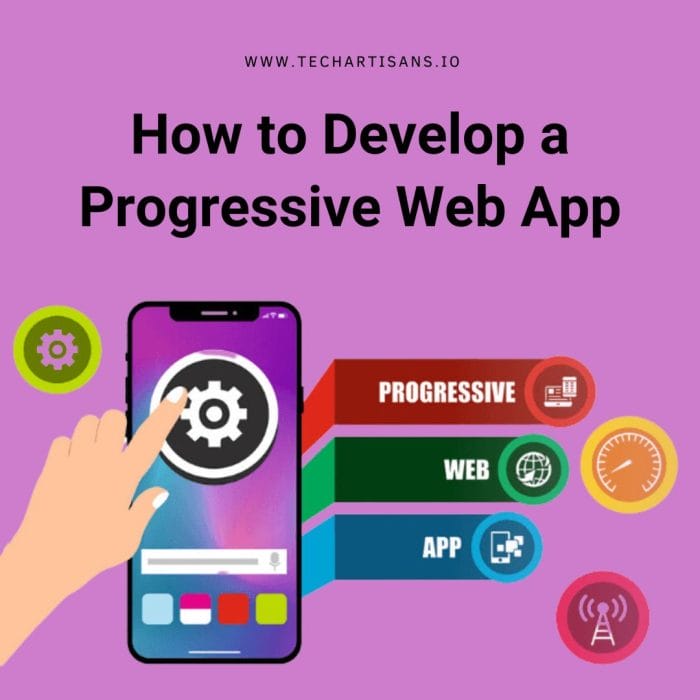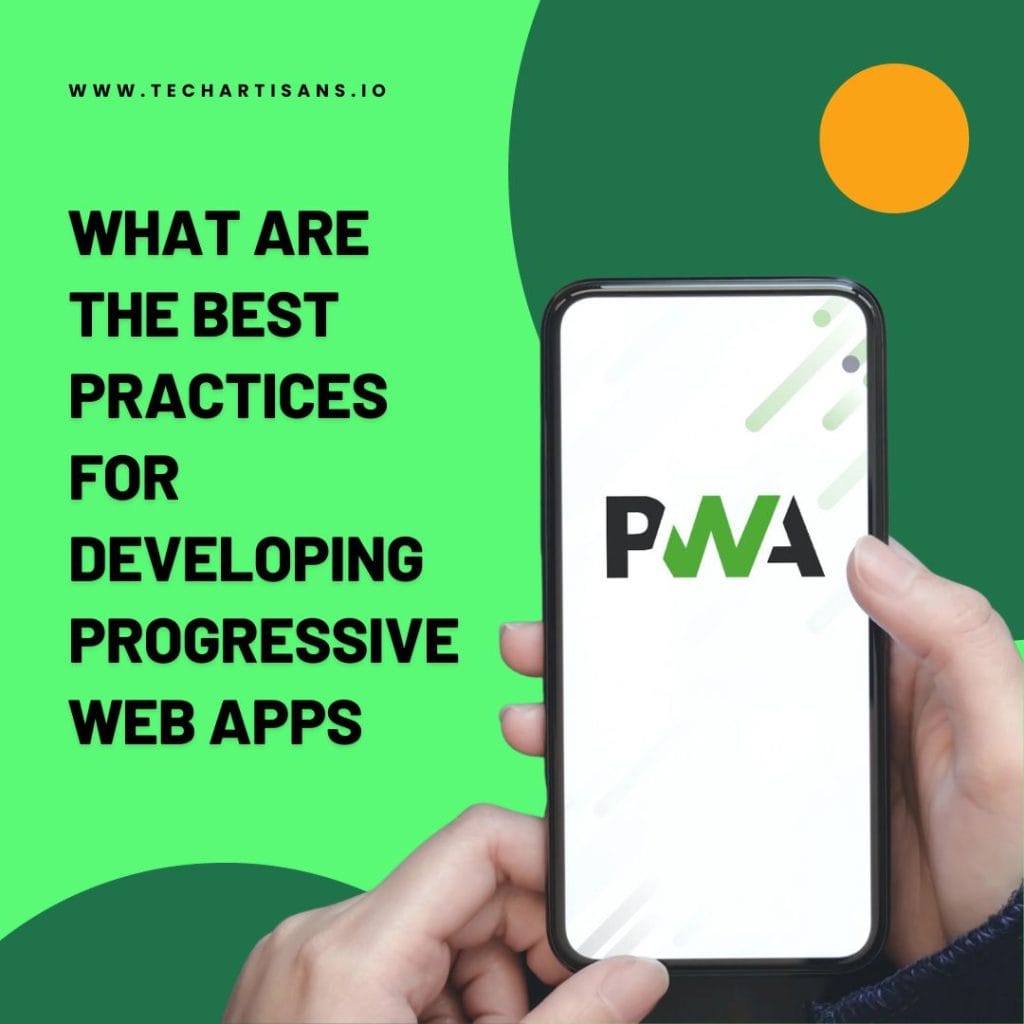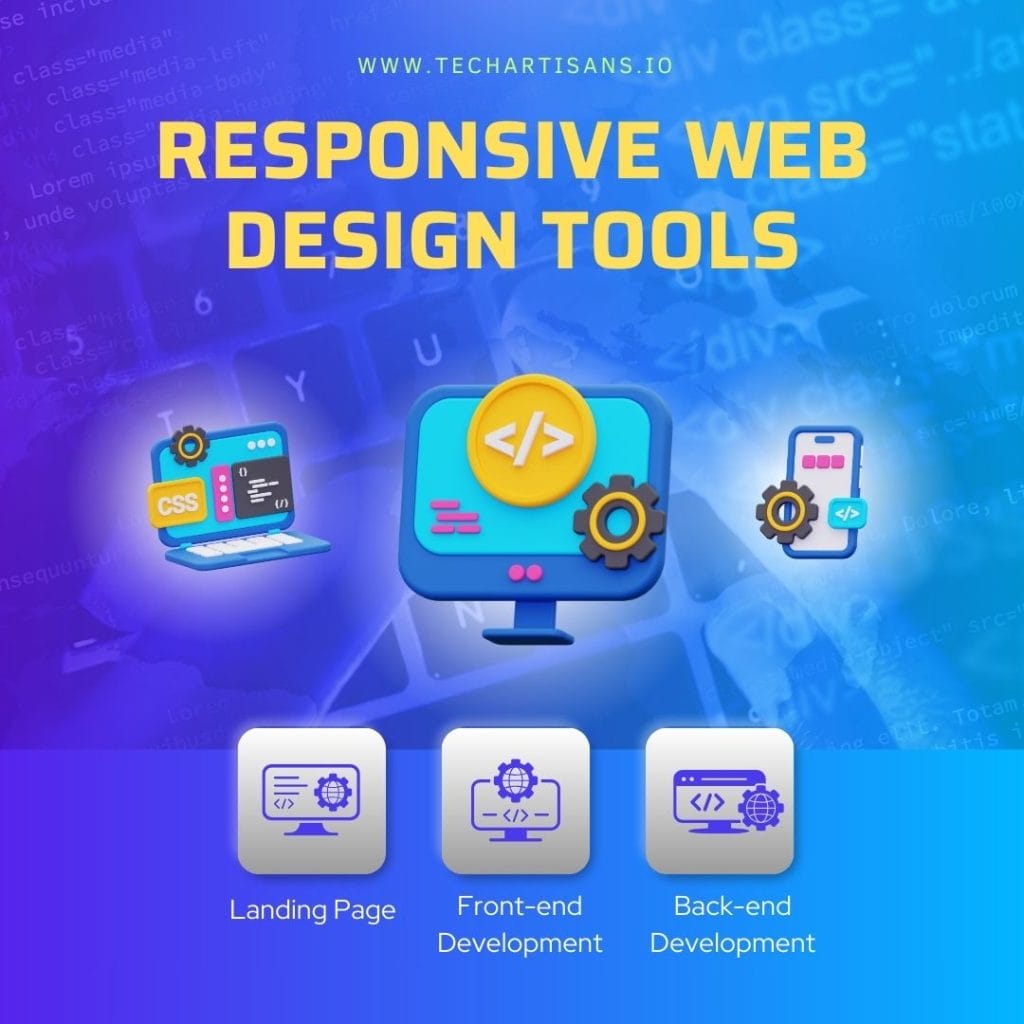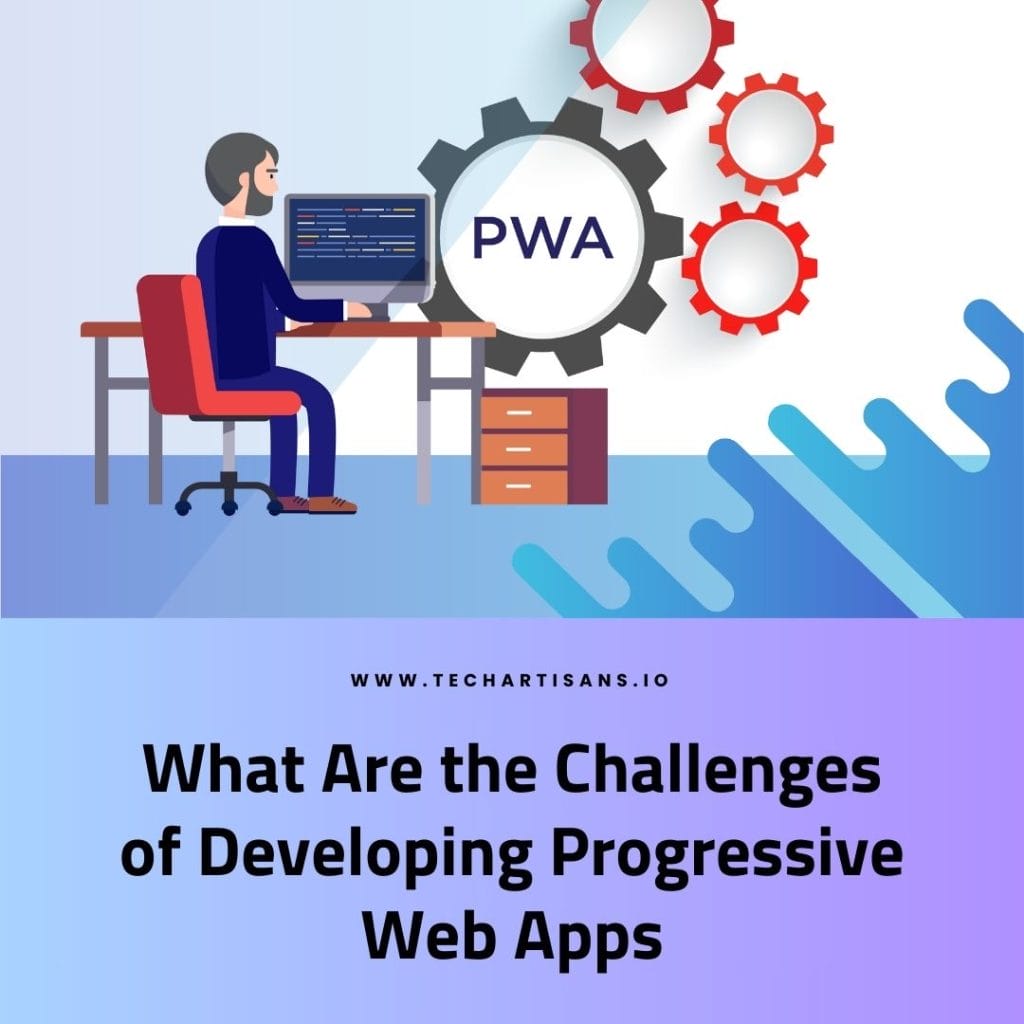In the fast-evolving digital landscape, Progressive Web Apps (PWAs) emerge as a game-changer, especially for small to medium businesses keen on leveling up their online game. But what exactly are PWAs? Essentially, PWAs blend the best features of web and native apps, designed to work on any platform that uses a standards-compliant browser. They offer a robust, reliable, and engaging user experience, mirroring the functionality of native apps but without the need for installation. The benefits of PWAs are immense—they are faster, more efficient, and less data-consuming, making them particularly appealing for businesses seeking to mesmerize users even in low-connectivity areas. So, if you’re wondering how to develop a Progressive Web App, you’re on the right path to boost your business’s digital presence.
Understanding the Technical Foundations of PWAs
Let’s delve into the technical foundations of PWAs, unraveling the core elements that bring this powerful technology to life. Understanding these components is vital to any business owner considering the leap to progressive web apps.
Core Technologies Behind PWAs: HTML, CSS, and JavaScript
PWAs are built on a triumvirate of core web technologies – HTML, CSS, and JavaScript. HTML (HyperText Markup Language) is the backbone, structuring the web page’s content. It creates the skeletal framework, defining headers, paragraphs, and links.
CSS (Cascading Style Sheets) is the aesthetic wizard that styles the HTML content. It brings visual appeal, handling the appearance, layout, colors, and fonts, enhancing the user interface.
JavaScript breathes life into the PWA, enabling interactive elements. It’s responsible for the functionality of forms, animations, and other dynamic features, making PWAs more engaging and user-friendly.
The Role of Service Workers and Manifest Files
Service workers and manifest files serve as the beating heart of Progressive Web Apps, driving their core functionalities.
Service Workers
Service workers are JavaScript files running independently from the web app, orchestrating the app’s behavior in the background. They hold the reins of network requests, enabling features like offline functionality and push notifications. Service workers can cache necessary assets for offline use by intercepting and handling network requests, allowing PWAs to load instantly and reliably, regardless of network conditions.
Manifest Files
Manifest files, on the other hand, dictate how your app appears to the user and how it can be launched. They are simple JSON files that contain the information a browser needs to interact with the PWA. Manifest files include details about the app’s name, icons, display, and orientation, providing instructions for when the app is saved to a user’s home screen. This crucial element lets users install the PWA on their device, like a native app, further enhancing the user experience.
Planning Your PWA
Effective planning becomes crucial as we venture into the next phase of developing a Progressive Web App. A well-thought-out plan will serve as the roadmap, directing the course of your PWA development journey and ensuring a seamless transition from concept to reality. Let’s explore the essential steps involved in planning your PWA.
Identifying Your Business Needs and How a PWA Can Meet Them
Before venturing into PWA development, it’s crucial to identify the specific needs of your business and understand how a PWA can fulfill those needs. Analyze your business model, target audience, and the typical user journey. Consider the problems your audience may face with your current web application—if it’s slow, not mobile-friendly, or inconsistent in performance, a PWA can be the perfect solution. Progressive web apps offer a fast, reliable, and immersive user experience, addressing these issues and, in turn, enhancing customer satisfaction and retention.
Next, map out the features you’d like your PWA to have. This could range from push notifications to offline functionality, based on what most suits your business needs. Consider also the user interface—you’ll want your PWA to be visually appealing, intuitive, and easy to navigate. Having a clear vision of your PWA’s functionality and aesthetics will help your development team bring your vision to life, creating a web app that is not only progressive and technologically advanced but also tailored to your business needs.
Setting Goals and Objectives For Your PWA
In developing a Progressive Web App, setting clear goals and objectives is pivotal. Start with a broad vision – what do you hope to achieve with your PWA? This could range from improving user engagement boosting conversion rates, to providing a seamless cross-platform experience. Then, break this vision down into specific, measurable objectives. For example, you can reduce your website’s load time by 50% or increase your conversion rate by 20% within the next six months. Remember to align these objectives with your overall business strategy. Finally, define key performance indicators (KPIs) to measure your progress towards these objectives, such as bounce rates, page views, session duration, or user retention rates. These goals will serve as guiding beacons, steering your PWA development project in the right direction.
Designing for the User Experience
When designing your Progressive Web App, the user experience should be at the forefront of your considerations. A well-designed PWA is not just about aesthetics; it’s about creating an intuitive, engaging, and efficient user journey that meets your audience’s needs and aligns with your business goals. Let’s explore how to ensure your PWA design puts users first.
Importance Of a Responsive and Intuitive Design
In responsive web apps, a responsive and intuitive design is paramount. This means the app should scale and adapt to various screen dimensions, from smartphones to tablets to desktops, providing a seamless and consistent experience across devices. Beyond just ing, an intuitive design implies a user-friendly interface with smooth navigation, predictable interactions, and easily located features. Remember, the ultimate objective is to simplify the user’s journey, making it as easy as possible to achieve their goals, whether purchasing, booking a service, or just finding information.
Tips For Creating An Engaging User Interface
When creating an attractive user interface for your Progressive Web App, several elements should be considered:
- Simplicity: Keep the design simple and clean, avoiding unnecessary clutter. This enhances usability, making it easier for users to find what they’re looking for and navigate your app.
- Consistency: Ensure consistency in the design elements such as color, fonts, and button styles. This reinforces brand recognition and improves user experience.
- Interactive elements: Use interactive elements such as buttons, swiping gestures, or feedback animations to make your PWA more dynamic and engaging.
- Clear hierarchy: Establish a clear order in your design to guide users intuitively through the different sections of your app.
- Accessibility: Ensure your interface is accessible for all users, including those with disabilities. This can involve using larger fonts and high-contrast colors and ensuring all functions are accessible via keyboard commands.
By following these tips, you can create an engaging interface that attracts and retains users, driving success for your Progressive Web App.
Starting with the Basics: Setting Up Your Development Environment
Creating a Progressive Web App is the first step to creating a conducive development environment. It forms the bedrock upon which your app will be built, influencing the efficiency of your workflow, the quality of your code, and, ultimately, the success of your app. Let’s dive into how you can establish this crucial foundation.
Tools and Prerequisites for PWA Development
To kick-start your PWA development journey, you’ll need some essential tools and conditions under your belt:
Knowledge of Core Web Technologies: Fundamental to any web development project, including PWAs, is a solid understanding of core web technologies such as HTML, CSS, and JavaScript. These languages are the building blocks of your app, enabling you to create its structure, design, and functionality.
Service Workers: Service workers play a crucial role in PWAs, providing offline functionality and enabling features like push notifications. Familiarize yourself with this JavaScript file that runs separately from the main browser thread, intercepting network requests, caching or retrieving resources, and delivering push messages.
Web App Manifest: This is a simple JSON file that controls how your app appears to the user and how it can be launched. Developing a good understanding of this component can help you customize your app’s user experience.
Development Tools: There are numerous tools available that can streamline your PWA development process. For instance, Lighthouse, an open-source, automated tool for improving the quality of web pages, can be invaluable in building a high-quality PWA.
HTTPS Server: Lastly, remember that a PWA requires a secure environment, meaning your site needs to be served over HTTPS. Therefore, you’ll need an HTTPS server to develop and test your PWA.
Securing these prerequisites gives you a strong foundation to develop your Progressive Web App.
Creating a Basic Structure of Your PWA
To begin creating your Progressive Web App (PWA), you must first establish a basic system. This structure serves as a blueprint for your app, outlining its main components and their relations.
HTML Structure: Your PWA’s basic structure starts with writing the HTML code defining the key sections of your app, such as the header, main content area, navigation bar, and footer. Each paragraph should be restricted using appropriate HTML elements, ensuring a team and coherent structure for your app.
Implementing CSS: After defining the HTML structure, you style your app with CSS. This involves assigning colors, fonts, and dimensions to your HTML elements, aligning with your brand’s visual identity, and enhancing the aesthetic appeal of your app.
JavaScript Functionality: The next step is adding functionality to your app with JavaScript. This could include interactive elements like form validation, dynamic content loading, or even more advanced features such as offline functionality enabled by service workers.
Service Workers: Speaking of service workers, these form a key part of your PWA’s basic structure. They manage caching and enable key PWA features like offline usage and push notifications.
Web App Manifest: Lastly, your basic PWA structure should include a web app manifest – a JSON file that controls how your app appears to the user and how it can be launched.
By carefully crafting a basic structure incorporating these elements, you lay the groundwork for a Progressive Web App that provides a seamless and engaging user experience.
Developing The Core Features of Your PWA
After laying the foundation and creating the basic structure, the next step is to breathe life into your Progressive Web App by developing the core features. These features distinguish PWAs from traditional web apps, offering a native app-like experience that is fast, reliable, and engaging. Let’s explore how to implement these key features to enhance your PWA’s functionality.
Building The User Interface With HTML and CSS
The user interface (UI) is a core component of your Progressive Web App (PWA), acting as the bridge between users and your app’s functionality. Constructing an intuitive and appealing UI is thus critical to the success of your PWA.
HTML – The Backbone of Your UI
HTML (HyperText Markup Language) forms the backbone of your user interface. It helps structure the content of your PWA, defining every element that appears on the page, such as headers, paragraphs, links, and images. A well-structured HTML document uses semantic elements that clearly describe its purpose, improving accessibility and making your PWA easier to navigate.
CSS – Enhancing the Look and Feel of Your UI
Once the basic HTML structure is in place, CSS (Cascading Style Sheets) comes into play to style the elements. CSS allows you to control layout, colors, fonts, and transitions, among other visual aspects, infusing your brand’s style into your PWA. Responsive design is key here, ensuring your PWA looks great on all devices, from desktops to smartphones.
HTML and CSS – Working Together
By seamlessly integrating HTML and CSS, you can create a user interface that is functional and visually captivating. This combination ultimately provides a more engaging, user-friendly experience, driving user retention and success for your Progressive Web App.
Adding Interactivity With JavaScript
Let’s explore how to utilize JavaScript to make your Progressive Web App more interactive and dynamic.
Understanding JavaScript’s Role
JavaScript serves as the driving force behind the interactivity in your Progressive Web App (PWA). It allows you to manipulate the HTML and CSS elements, turning static web pages into dynamic, interactive experiences that respond to user actions.
Event Handling
One of the primary ways JavaScript adds interactivity is through errors that occur during generation. Please try again or contact support if it continues. Event handling, where you can listen for specific events triggered by the user, such as a click on a button or errors. This allows you to respond to these actions and update the app accordingly.
Client-side Data Manipulation Event
JavaScript also enables client-side data manipulation, meaning you can validate form inputs, perform calculations, and make API calls without reloading the page.
Making Your App Work Offline: Service Workers
Service Workers play a pivotal role in elevating the functionality of your Progressive Web App (PWA) by enabling it to work offline. This revolutionary technology acts as a proxy between your PWA and the network, allowing it to respond to user interactions even when there is no internet connection.
What Service Workers Are and How They Function
Service Workers are a type of web worker, JavaScript files that run separately from the main browser thread. They intercept network requests, acting as a proxy server between web applications, the browser, and the network (when available).
These workers function by listening for certain events, such as network requests or push notifications, and respond accordingly. This capability allows them to cache your app’s assets and serve them directly from the cache rather than the network – a critical feature enabling your Progressive Web App (PWA) to function offline.
Implementing a Service Worker For Offline Capabilities
Implementing a service worker to enable offline capabilities in your Progressive Web App (PWA) involves key steps. First, you need to register the service worker. This is done within the main JavaScript file of your PWA. Registration tells the browser where your service worker JavaScript file lives.
Registration of Service Worker
“`javascript
if (‘service worker in navigator) {
navigator.serviceWorker.register(‘/service-worker.js’)
.then(function(registration) {
console.log(‘Service Worker registration successful with scope: ‘, registration.scope);
})
.catch(function(err) {
console.log(‘Service Worker registration failed: ‘, err);
});
}
“`
Once registered, the service worker undergoes an installation process. During this phase, it’s common to cache your app’s static assets.
Installation of Service Worker
“`javascript
self.addEventListener(‘install’, function(event) {
event.wait until(
caches.open(‘my-site-cache’).then(function(cache) {
return cache.addAll([
‘/’,
‘/index.html’,
‘/styles.css’,
‘/script.js’,
]);
})
);
});
“`
After installation, the service worker becomes active and controls developing your PWA’s pages, allowing it to intercept network requests.
Fetch Events Handling
“`javascript
self.addEventListener(‘fetch’, function(event) {
event.respondWith(
caches.match(event.request)
.then(function(response) {
if (response) {
return response;
}
return fetch(event.request);
})
);
});
“`
When the user is offline, the service worker intercepts fetch requests and serves the assets directly from the cache, providing an uninterrupted user experience.
Creating a Web App Manifest
The Web App Manifest is crucial in developing your Progressive Web App (PWA). It’s essentially a JSON file that provides a centralized place to define how your app should behave when installed on the user’s device. It contains the app’s name, icon, display properties, and start URL. This manifest file truly differentiates a PWA from a regular web application, enabling it to be discovered, installed, and run in full-screen mode, enhancing the user’s experience and engagement with your app.
Purpose and Importance Of The Web App Manifest
The Web App Manifest is instrumental in defining your Progressive Web App (PWA) ‘s look and feel when installed on a user’s device. It gives your web app the appearance of a native app, improving its appeal and UX.
The Manifest file serves several important purposes. Firstly, it provides metadata used when your web app is added to the home screen of a user’s device, ensuring the app launches seamlessly and displays as intended. This includes defining the start page, screen orientation, and even the theme color for the address bar.
The Web App Manifest also facilitates the ‘Add to Home Screen’ prompt. Without it, your PWA would lose the ability to be installed and run in full-screen mode, a feature that sets PWAs apart from regular web applications.
The Manifest file allows your web app to behave more like a native app, creating a more engaging, immersive, and user-friendly experience. It’s a crucial element in the PWA development process, impacting the overall user perception and engagement with your app.
A Step-by-Step Guide To Creating And Linking a Manifest File
Creating and linking a Web App Manifest for your Progressive Web App (PWA) involves a series of steps:
Step 1: Creating the Manifest File
Create a new file in your project’s root directory and name it `manifest.json’. This file will hold all the configuration details for your web app.
Step 2: Adding Basic Information
Inside the `manifest.json` file, you’ll need to define some basic properties in JSON format. These include `name` (the full name of your app), `short_name` (the name displayed on the user’s home screen), and `description` (a brief explanation of your app’s function).
“`json
{
“name”: “My Progressive Web App”,
“short_name”: “MyPWA”,
“description”: “An example of a Progressive Web App”
}
“`
Step 3: Specifying Display Properties
Next, specify your app’s display properties. `start_url` defines the entry point of your app, while `display` determines how your app appears when launched. Common options for `display` include `standalone,` `fullscreen`, and `minimal-ui`.
“`json
{
“start_url”: “/index.html”,
“display”: “standalone”
}
“`
Step 4: Defining App Icons
It’s also essential to define your app icons. These will be displayed on the user’s device upon installation. You’ll need to specify different sizes to cater to various devices.
“`json
{
“icons”: [
{
“src”: “/images/icon-72×72.png”,
“sizes”: “72×72”,
“type”: “image/png”
},
…
]
}
“`
Step 5: Linking the Manifest File
Finally, to make your web app discoverable, you must link the `manifest.json` file in your HTML file using a `link` tag in the `head` section.
“`html
<head>
<link rel=”manifest” href=”/manifest.json”>
</head>
“`
By meticulously following these steps, you’ll successfully create and link a Web App Manifest, setting your PWA up for optimal user interaction and engagement.
Testing and Debugging Your PWA
Ensuring the seamless operation of your Progressive Web App (PWA) requires thorough testing and debugging. This crucial phase helps identify potential issues that could inhibit performance, guaranteeing an optimal user experience.
Tools and Strategies For Effective Testing
To effectively test your Progressive Web App (PWA), several tools and techniques come in handy:
Lighthouse: Lighthouse, an open-source tool by Google, stands at the forefront of PWA testing. It runs audits for performance, accessibility, SEO, and more, offering actionable feedback to improve your app’s quality.
DevTools in Chrome: Chrome’s in-built DevTools provide a wealth of functionality for debugging your PWA. You can simulate different network conditions, audit your app, and inspect the service worker and storage.
WebPageTest: This tool is excellent for performance testing. It offers insight into your app’s speed and reliability across various devices and network conditions.
Manual Testing: Don’t underestimate the power of manual testing. Interacting with your app as a user would uncover potential UX issues.
Implementing a robust testing strategy encompassing these tools and approaches ensures that your PWA is powerful, reliable, and ready to deliver a seamless user experience.
Common PWA Development Pitfalls and How to Avoid Them
Developing a Progressive Web App (PWA) has challenges; here, we highlight common pitfalls and offer strategic solutions to avoid them.
Pitfall 1: Ignoring Offline Functionality
One of the biggest benefits of Progressive Web Apps is their ability to function offline or on low-quality networks. Neglecting this aspect can undermine the user experience. To avoid this, ensure your PWA is designed to cache important files and data for offline use.
Pitfall 2: Not Optimizing for Different Devices
PWAs should offer a seamless experience across various devices and screen sizes. Failing to optimize your PWA for different devices can limit its appeal and usability. To prevent this, adopt a responsive design that adapts to any screen size and orientation.
Pitfall 3: Overlooking the Importance of the Manifest
The Manifest file is key in dictating how your PWA appears and functions when installed on a user’s device. Neglecting it can affect the app’s launch and display. Mitigate this by meticulously crafting your manifest file defining all important properties.
Pitfall 4: Skipping Testing and Debugging
Skipping testing and debugging phases can result in performance issues, damaging the user experience. Avoid this by thoroughly testing your PWA using various tools and strategies mentioned above.
By being mindful of these common pitfalls during development, you can ensure that your Progressive Web App is well-optimized, user-friendly, and ready to drive business success.
Deploying Your PWA
Deploying your Progressive Web App (PWA) is the final step in making your digital product available to the end user. This process involves careful preparation and execution to ensure a seamless transition from development to live environment, making your PWA accessible to your audience on the web.
Choosing the Right Hosting and Deployment Strategies
One of the essential aspects of deploying your Progressive Web App (PWA) is selecting an appropriate hosting platform and deployment strategy. The right choice can significantly influence your app’s performance, scalability, and user experience.
Hosting Platform: Regarding hosting platforms for PWAs, it’s crucial to consider scalability, uptime, and data security. Cloud-based hosting solutions, such as Amazon AWS, Google Cloud, or Microsoft Azure, are popular due to their scalability, high uptime, and robust security measures.
Deployment Strategy: Your deployment strategy should be efficient and cause minimal disruption to the user experience. Continuous Deployment (CD) works well for PWAs, allowing for automatic deployment of changes once they have passed automated testing. This approach ensures rapid delivery of features and fixes to your users.
Ensuring Your PWA is Secure and Performs Well
Ensuring the security and performance of your Progressive Web App (PWA) is crucial for maintaining user trust and delivering a satisfying user experience.
Security
Security should be a priority throughout the development and deployment of your PWA. Use HTTPS protocol, which encrypts data between the client and server, to protect sensitive user data. Regularly audit your PWA for potential vulnerabilities using tools like Lighthouse or Google’s Security Panel in DevTools.
Performance
Performance optimization is key to a seamless user experience. Utilize service workers to cache critical resources and enable faster load times. Compress images to reduce size without compromising quality, and minify your code to enhance loading speed. Regular performance testing using tools like Lighthouse or WebPageTest can help identify areas for improvement.
By placing a strong emphasis on security and performance, you will build a PWA that is robust and reliable and delivers a superior user experience, driving user engagement and business success.
Promoting Your PWA
Once your Progressive Web App (PWA) is developed, tested, and deployed, the next crucial step is to craft a strategic promotion plan. This will ensure that your PWA reaches its intended audience, maximizes user engagement, and drives business success.
Marketing Strategies for Your New PWA
Now, let’s delve into effective marketing strategies that can help drive visibility and adoption for your newly launched Progressive Web App.
-
Utilize Social Media
Leverage the power of social media platforms to spread the word about your new Progressive Web App (PWA). Create engaging posts and ads tailored to each platform’s audience to attract potential app users.
-
Email Marketing
Email marketing is an effective way to reach your existing customer base. Consider sending out an announcement about your new PWA and a walkthrough of its features and benefits.
-
Search Engine Optimization (SEO)
Optimize your app’s content for search engines to increase its visibility. Use SEO best practices, including keyword-rich descriptions and metadata, to help your PWA rank higher in search results.
-
Paid Advertising
Investing in paid ads can also help boost your PWA’s visibility. Platforms like Google Ads and Facebook Ads offer targeted advertising options to reach potential users likely to be interested in your app.
By employing a mix of these marketing strategies, you can effectively promote your PWA, increase its visibility, and attract more users.
Leveraging App Stores and Web Presence
Discover how to extend your PWA’s reach by leveraging app stores and establishing a strong web presence.
App Stores: Leveraging the power of app stores can significantly boost the visibility of your Progressive Web App (PWA). Distribution platforms such as Google Play Store and Microsoft Store allow PWAs to be listed, increasing their discoverability. Optimize your PWA listing with engaging descriptions, high-quality screenshots, and user reviews to encourage more downloads.
Web Presence: Enhancing your web presence is another effective strategy for promoting your PWA. Ensure your website is fully optimized for search engines, using SEO best practices. Include a clear and visible call-to-action for your PWA on your website’s main page. Regularly publish relevant and high-quality content — such as blog posts or articles — about your PWA, its features, and benefits. This can drive traffic to your website and increase awareness of your PWA.
By utilizing both app stores and your web presence, you can maximize the reach of your PWA, attracting a broader user base and propelling your business toward success.
Analyzing and Optimizing PWA Performance
Analyzing and optimizing the performance of your Progressive Web App (PWA) is a continuous process that ensures your digital product maintains an optimal user experience, remains competitive, and drives business growth effectively.
Tools for Monitoring PWA Performance
Several tools are available to help monitor and optimize the performance of your Progressive Web App (PWA), ensuring it continually delivers a high-quality user experience.
Google Lighthouse
Google Lighthouse is an open-source tool that assesses the performance and quality of your PWA. It provides audits for performance, accessibility, and search engine optimization. Its report also offers actionable recommendations to optimize your PWA.
Google Analytics
Google Analytics is a crucial tool for understanding user behavior on your PWA. It collects data on user engagement, such as session duration, bounce rate, and user demographics, which can inform optimization strategies.
Chrome Developer Tools
Chrome Developer Tools offers web developer tools built directly into the Google Chrome browser. It allows you to audit your PWA in real-time, debug JavaScript, and analyze network performance, among other things.
WebPageTest
WebPageTest is an online tool that allows you to perform performance tests on your PWA from multiple locations around the globe using real browsers at real consumer connection speeds.
Incorporating these tools into your performance analysis and optimization strategy will ensure your Progressive Web App’s performance remains top-notch.
Tips for Ongoing Optimization and Updates
Regular Auditing: Conduct regular audits using tools like Google Lighthouse to ensure your Progressive Web App (PWA) maintains optimal performance. Audits can reveal areas for improvement and help you take necessary action promptly.
User Feedback: Listen to user feedback and use it for continual improvement. User experience can offer valuable insights into what’s working and needs tweaking in your PWA. Remember, updates should ultimately enhance user satisfaction and engagement.
Update Content Regularly: Keep your content fresh and relevant. Regular updates of content, images, and other features can enhance user experience, keep your PWA engaging, and encourage users to return.
Technological Advancements: With rapid technological advancements, it’s essential to stay updated. Incorporate the latest web development trends and innovative features to keep your PWA at the cutting edge, ensuring it remains competitive and appealing to users.
By following these tips, you can ensure your Progressive Web App remains optimized and up-to-date and continues driving success for your business.
Conclusion
Creating a Progressive Web App (PWA) involves a series of steps, including planning your app, designing and developing it, deploying it, marketing it effectively, and continually analyzing and optimizing its performance. By embracing PWA technology, businesses can provide a seamless and engaging user experience across multiple devices, enhancing customer satisfaction. Further, PWAs can significantly improve web presence, boost visibility, and drive business growth. So, leap towards the future of web development and unlock the potential of your business with progressive web apps.







